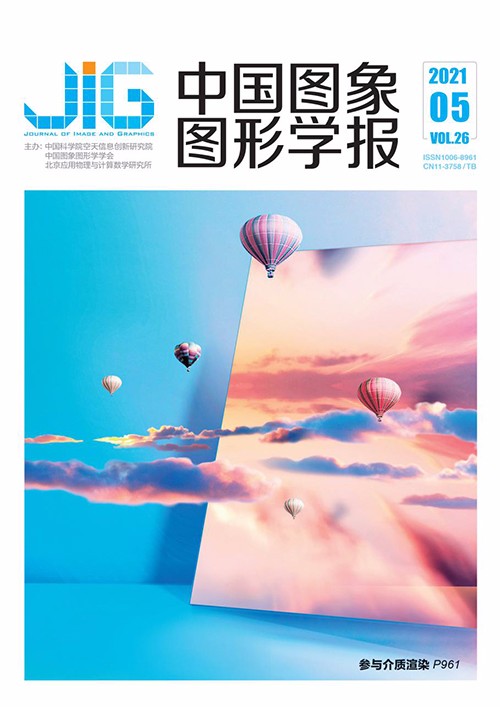
均匀参与介质的渲染方法研究
摘 要
参与介质在现实世界中广泛存在,光线在参与介质中的传播过程比在表面上的传播过程更加复杂,比如在高度散射参与介质中会发生成千上万次反射、在低散射参与介质中由于表面聚集出现体焦散效果,从而使得光线的模拟过程非常耗时。目前常用的方法包括点、光束和路径统一模型法(unifying points,beams and paths,UPBP)以及流型探索梅特罗波利斯光线传递方法(manifold exploration Metropolis light transport,MEMLT)等,这些方法在一定程度上改进了原有方法,但是在一些特殊情况下仍然需要很长时间才能收敛。本文介绍几种针对均匀参与介质的高效渲染方法。1)基于点的参与介质渲染方法,主要通过在参与介质内分布一些点来分别加速单次、二次和多次散射的计算,在GPU (graphics processing unit)实现的基础上,最终达到可交互的效率,并且支持对任意的均匀参与介质的编辑。2)基于多次反射的预计算模型,预计算出无限参与介质中的多次散射分布,通过分析光照分布的对称性,将该分布的维度从4维减低为3维,并且将该分布应用到多种蒙特卡洛渲染方法中,比如MEMLT、UPBP等,从而提高效率。3)参与介质中的路径指导方法,通过学习光线在参与介质中的分布,该分布用SD-tree (spatial-directional tree)来表示,与相位函数进行重采样来产生出射方向。以上3种方法分别从不同角度加快了参与介质的渲染效率。
关键词
Survey of rendering methods for homogeneous participating media
Wang Beibei, Fan Jiahui(School of Computer Science and Engineering, Nanjing University of Science and Technology, Nanjing 210094, China) Abstract
Participating media are frequent in real-world scenes, such as milk, fruit juices, oil, or muddy water in river or ocean scenes. Realistic rendering of participating media is one of the important aspects in the rendering domain. Incoming light interacts with these participating media in a more complex manner than surface rendering:it is refracted at the boundary, absorbed, and scattered as it travels inside the medium. These physical phenomena have different contributions to the overall aspect of the material:refraction focuses light in several parts of the medium, creating high-frequency events, or volume caustics. Scattering blurs incoming light, spreading its contribution. Absorption reduces light intensity as it travels inside the medium. In recent years, several algorithms, such as virtual ray lights (VRL), several extensions to photon mapping culminating with unified points, beams, and paths (UPBP), and manifold exploration Metropolis light transport(MEMLT), have been introduced for rendering participating media. All these methods have greatly improved the simulation of participating media but still encounter problems for simulation of materials with a high albedo, where multiple scattering dominates or high-frequency volumetric caustics effects. Another group of work is called diffusion-based methods. These methods are fast and designed to work with materials with a high albedo. However, these methods produce less accurate results, especially for highly anisotropic media, whereas diffusion-theory-based methods use similarity theory for anisotropic media, which leads to increased inaccuracy. In this paper, several efficient rendering methods are introduced for homogeneous participating media rendering. The first is point-based rendering method for participating media. The point-based method is different from the previous two frameworks (Monte Carlo rendering and density estimation). It first distributes several points in the participating media to generate a point cloud, organizes the point cloud into spatial hierarchy, and then uses it to accelerate the single, second, and multiple scattering computation. For multiple scattering simulation, a precomputed multiple scattering distribution representation in infinite media is presented. With further GPU(graphics processing unit) implementation, this method can achieve interactive efficiency and support the editing of materials and light sources for arbitrary homogeneous participating media, from high-scattered media to high-absorbed media and from isotropic media to highly anisotropic media. The first work is an extension of the point-based method from the surface rendering to volume rendering. Different from the two other frameworks, it is deterministic and noise-free. However, this method is biased. Its target application is material editing or light editing or high-quality rendering with a limited time budget. The second is a precomputed model based on multiple reflections. It precomputes multiple scattering distributions in infinite participating media, proposes a more compact representation than the prior works by analyzing the symmetric of the light distribution, and decreases the number of dimensions from four to three. The precomputed model is then applied to various Monte Carlo rendering methods, such as VRL, UPBP, and MEMET. The original algorithms are in charge of low-order scattering, combined with multiple scattering computed using the precomputed model. Results show substantial improvements in convergence speed and memory costs, and a negligible effect on accuracy. This method is especially interesting for materials with a large albedo and a small mean-free-path, where higher-order scattering effects dominate. It has a limited influence but also a limited cost for more transparent materials with a larger mean-free-path. This method can be used for unidirectional rendering algorithms (e.g., path tracing) and bidirectional algorithms (e.g., VRL), but this method has less impressive speedup in unidirectional algorithms because unidirectional rendering algorithms have difficulties in finding a path for participating media with boundaries. The last introduced method is a path guiding method in participating media rendering, which is under the framework of path tracing. In simple terms, the paths become lost in the medium. Path guiding has been proposed for surface rendering to make the convergence faster by guiding the sampling. In this work, a path guiding solution to translucent materials is introduced. It includes two steps, namely, learning and rendering. In the learning step, the radiance distribution in the volume is learned with path tracing, and this 4D distribution is represent with an SD-tree. In the rendering step, this representation is used for sampling the outgoing direction, combining with the phase function sampling by resampled importance sampling. The key insight of resampled importance sampling is about sampling two multiplied high-frequency functions. The proposed method remarkably improves the performance of light transport simulation in participating media, especially for small lights and media with refractive boundaries. This method can handle any homogeneous participating media, from high scattering to low scattering, from high absorption to low absorption, and from isotropic media to highly anisotropic media. Unlike the previous two works, this method is unbiased. However, it can only handle direction sampling with path guiding and leaves the distance sampling with the original method, which can be further improved. The three methods all target the efficient rendering of homogenous participating media but in different methods.
Keywords
participating media rendering Monte Carlo based methods path guiding point-based rendering method multiple scattering survey progress
|



 中国图象图形学报 │ 京ICP备05080539号-4 │ 本系统由
中国图象图形学报 │ 京ICP备05080539号-4 │ 本系统由